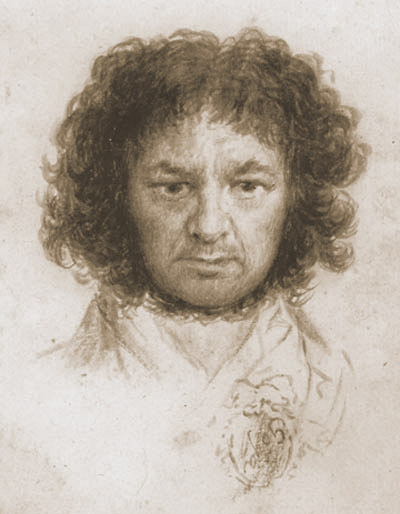![]()
An Introduction to Goya

[Above: Goya Self-Portrait]
Born March 30, 1746
Fuendetodos, Zaragoza Spain
Died April 15, 1828
Bordeaux, France
During the time that Goya lived and painted,Spain, the place of his birth, went through repeated upheaval and periods of extreme violent crisis. He lived through the political dysfunction of changing leadership in Spain, the revival of the Inquisition, military occupation of Spain by France, and the installment of Napoleon's brother Joseph Bonaparte as the King of Spain.
Afterwards, when the oppressive Spanish King Ferdinand VII was reinstated as monarch, Goya was "officially rehabilitated" along with other Spanish notables, but this situation was pre-empted by another revolution (1820), in which general Rafael Riego led insurgents against the King, and put in place a new government and liberal constitution. However, with military backing, King Ferdinand was back in power by 1822.
Despite the fact he was named to the highest privileged position for an artist in Spain, "First Painter to the King," Goya, as did many others, left the country in a search for stability. Though he would return on trips to the Spain he had lived in for most of his eighty-some years, Goya died an exile in Bordeaux, France.
Goya has often been accused by some writers for an apparent misanthropy and general bitterness toward the world. They overlook that Goya's work repetitiously disdains cruelty, arrogance, and savagely attacks - - sometimes with satire, but often with blunt reportage - - the venal practices of the powerful people he knew. That Spain was in Goya's affections is not disputable; but that he harbored a loathing for the weaknesses and the proud cruelties, the moral chaos and the failure of intellectual ideals that added to the chaos, is discernible in the evolution of Goya's approach to presenting images, and chiefly in his choices of subject matter. He was, above all, an artist, and as a man, one who learned about the failures around him by experiencing them himself.
– Erik Weems, 1998
http://eeweems.com/goya/introduction_b.html